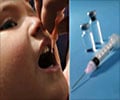A new pneumococcal vaccine had been introduced in 2010 in Tennessee, for infants and young children. This event coincides with a 27 percent decline in the pneumonia hospital admissions.

"We had such a dramatic decline from the first vaccine that we really didn't know how much more effect you would get by adding six more serotypes to the vaccine. So it was very gratifying to see that there was another major drop in pneumonia hospitalizations -- a pretty dramatic additional decline," said the report's corresponding author, Marie Griffin, M.D., MPH, professor of Health Policy and Medicine at Vanderbilt. Since introduction of the earlier vaccine, pneumonia admissions among Tennessee children younger than 2 are down 72 percent, to an annual rate in 2012 of 4.1 per 1,000 population under age two.
This is an all-time low rate for Tennessee and it implies a reduction of more than 1,300 pneumonia admissions per year in this age group since 2000. The data come from the Tennessee Hospital Discharge Data System, which records billing data (including diagnosis and procedure codes) from hospitalizations and emergency department visits from all non-federal hospitals in Tennessee. "There's really a push for health departments and people doing public health surveillance to use local data to find out what's happening in our city or in our state, and then to react to those data. Now that these data are available electronically, we should be able to have these answers in a really fast way," Griffin said.
When selecting antibiotic treatments for childhood pneumonia, providers apparently often consider that pneumococcus is involved, but given the success of pneumococcal vaccine, this common assumption is now subject to greater doubt. "Appropriate management of childhood pneumonia in the era of pneumococcal vaccines needs to be continually assessed because the distribution of bacterial and other causes of pneumonia in young children will likely change," the authors write.
Source-Eurekalert













